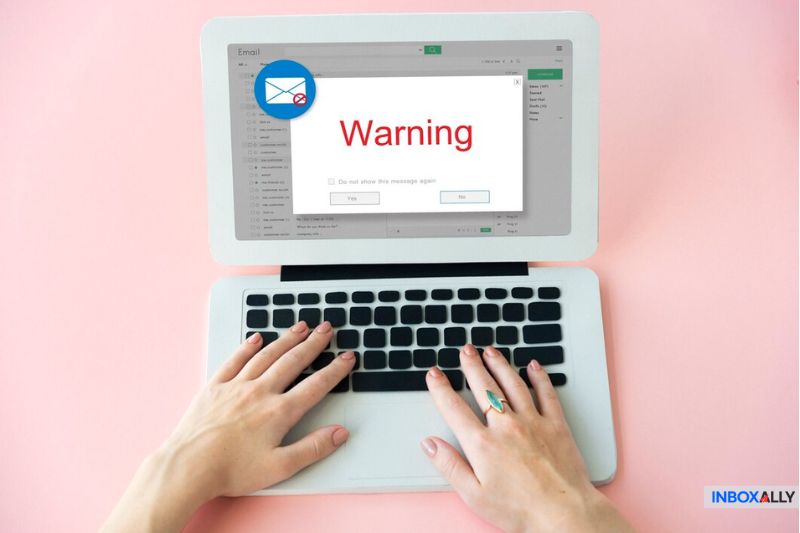Spam traps can severely impact email deliverability, leading to IP blacklisting, reduced sender reputation, and lower inbox placement.
Hitting a pristine spam trap is particularly damaging compared to recycled ones, making it crucial for email marketers to proactively avoid them.
Today, spam traps play an important role in identifying spammers. Email marketers, especially those sending bulk emails, must understand what spam traps are and how to avoid them.
This guide will walk you through spam trap detection, helping you maintain a clean email list and prevent major deliverability issues.
Without proper maintenance and regular cleaning, you may unknowingly be flagged as a spammer by some mailbox providers. Just one spam trap can undermine your deliverability—often without you even noticing.
So if you want to uncover hidden threats that could be silently harming your sender reputation, keep reading…
What are Spam Traps?
![]()
Also known as honeypots, spam traps are email addresses used by mailbox providers, including blacklist operators, email clients, and Internet Service Providers (ISPs), to identify senders of spam emails.
These addresses may be newly created solely for trapping spammers or older, abandoned email accounts repurposed for the same purpose.
Additionally, spam trap email addresses are never publicly visible or published on websites to prevent legitimate senders from accidentally coming across them.
Spam traps are managed by various organizations, including Domain Name System Blacklists (DNSBLs) like Spamhaus, Spamcop, and Barracuda. These entities use traps to identify senders with poor list hygiene.
Major email providers such as Gmail, Yahoo, and AOL also maintain spam traps, and hitting one of them can lead to permanent blacklisting.
Your emails should be seen by your audience, not sitting in spam folder. If spam traps are hurting your sender reputation, InboxAlly can help you recover and optimize inbox placement. See it in action—book a demo.
Types Of Spam Traps
Spam traps come in different forms, and each can catch senders who use poor list management practices. Some are specifically made to detect spammers, while others are simpler, originating from outdated or mistyped email addresses. Understanding these variations can help you avoid landing on one and maintain a clean email list.
Pure (Pristine) Spam Traps
Pure spam traps, also known as pristine spam traps, are email addresses created by ISPs and other organizations specifically to catch spammers. These emails have never been used by anyone.
So, how do they end up on a subscriber list?
They are embedded in websites, and when marketers scrape sites or purchase lists, these traps get added unknowingly. Hitting a pristine spam trap can immediately lead to blacklisting.
Seeded Spam Traps
Seeded spam traps are purposely hidden in website source codes or online resources. These traps identify marketers who acquire emails through scraping or unverified list purchases.
Recycled Spam Traps
Recycled spam traps are previously valid email addresses that were abandoned and later repurposed by providers as traps. Even if your list was obtained legally, sending to these addresses signals poor email hygiene and can hurt deliverability.
Typo Spam Traps
Sometimes, people mistype their email addresses during sign-up, leading to variations like “yaho” instead of “yahoo” or “gnail” instead of “gmail.” These seemingly harmless mistakes can act as spam traps, flagging senders who don’t clean their lists properly.
Why Spam Traps Are Dangerous
Let’s say your list contains a spam trap—what happens next?In the worst-case scenario, a security organization or ISP could block the IP your emails are being sent from.
“But can’t I just grow my subscriber list and drown out the spam traps? One spam trap in a list of 5 million emails isn’t a big deal,” you might think.Unfortunately, ISPs and organizations that manage spam traps don’t see it that way. They don’t care whether you’re sending to 5 recipients or 5 million—hitting a spam trap can still damage your reputation.
Other consequences of spam traps include:
- Permanent blacklisting of your IP or sending domain
- Severely reduced deliverability and inbox placement
- Higher bounce rates and failed email campaigns
That’s why email marketers must make spam trap detection and list hygiene a top priority.
How to Detect Spam Traps
Detecting spam traps isn’t easy because, at a glance, they look like any other email address. You can send emails to them without any immediate issues. However, there are a few techniques you can use.
One of the most effective methods is tracking user engagement throughout your email campaigns. Since spam traps aren’t tied to real users, they never open emails, click links, or engage in any way.
If you notice certain email addresses that remain completely inactive, they could be spam traps—or, at the very least, disengaged recipients who aren’t interested. Either way, it’s best to blacklist or remove them from your list.
Here are some more techniques you can use to identify them:
- Typos in Email Addresses – If you spot email addresses with obvious typos, remove them immediately. For example, you might find test@gmial.com instead of test@gmail.com.
- Fake or Irrelevant Email Addresses – Watch out for sketchy email addresses. Does something like zzmoms@nobodyserve.ter look legitimate? Email providers create these addresses as traps to catch senders with poor list hygiene.
- Hard Bounces – Chances are that you will receive a hard bounce whenever you send an email to a spam trap. Once you immediately get this, you can categorize that email address as a spam trap and get rid of it.
- Dormant Addresses – Do you still use the very first email address you ever created? Many old, abandoned addresses are repurposed as spam traps. These can often be identified by monitoring user engagement.
Even if you remove spam traps, poor engagement can still hurt deliverability. InboxAlly can help you get better inbox rates and stay out of spam for good. Try it for yourself—book a live demo today.
How to Avoid Spam Trap Email Addresses
1. Use Double Opt-In Confirmation
The best way to ensure a clean email list is by using double opt-in confirmation during sign-up. This guarantees that only valid email addresses are added to your list, and it confirms that subscribers are genuinely interested in receiving your emails.
2. Get Your Spring (and Fall, and Summer…) Cleaning On
Regular list cleaning helps eliminate spam traps before they cause problems. By maintaining a healthy contact list, you can remove outdated emails and addresses with typos.
Assigning one or two team members to oversee this process ensures it doesn’t get overlooked. Cleaning can be done twice a year, quarterly, or whenever it best fits your workflow.
But that’s just one piece of the puzzle. InboxAlly trains inboxes to trust your emails, improving engagement and strengthening your sender reputation. Try InboxAlly out and combine best practices with an even better deliverability tool!
3. Use Email Verification Tools
Email verification tools like the one at InboxAlly help you validate addresses before they ever make it onto your list, which reduces bounce rates and improves overall deliverability.
Some tools require you to upload a CSV file for a one-time clean-up, while others offer continuous monitoring. This too allows you to filter out invalid addresses with blacklist and whitelist options.
4. Segment Your Audience
Another way to avoid spam traps is by segmenting your subscribers based on their recent activity. Preferably, users who received your email and opened or clicked it in the last 0 to 12 months can be a part of your marketing deployments to reduce the likelihood of hitting emails that are converted as spam traps.
5. Monitor User Activity Closely
Spam trap addresses are set up to receive an email but not to interact with it. That’s why we encourage you to monitor your list’s activity closely. If a user stops opening your email or clicking a link on your content for several months, you may want to consider retiring that list from further mailings.
6. Grow Your List Organically
While buying email lists may seem like a quick solution, growing your list organically is always the safer and more effective approach.
Sending emails to people who actually requested them significantly reduces the risk of spam traps and boosts engagement.
The best way to attract genuine subscribers is through high-quality content, social media promotion, and adding opt-in checkboxes to your contact or conversion forms.
Win the Cat-and-Mouse Game
You’re not a spammer, but you still need to stay ahead in the ongoing game between ISPs and spammers.
Don’t ignore a spam trap alert—if one ends up on your list, it’s a clear sign your list needs cleaning. And if that alone isn’t enough, the strategies we’ve covered will help you fix the issue.
The process may take a few days or even a couple of weeks, but if you’re willing to put in the effort, you can recover from the damage or—better yet—avoid spam traps entirely by staying proactive.
After all, spam traps can only catch you off guard if you let them.
And if you need help, don’t be afraid to reach out! At InboxAlly, we’ve helped countless clients steer clear of spam traps and improve their email deliverability. Want to see how? Book a live demo with us today.


